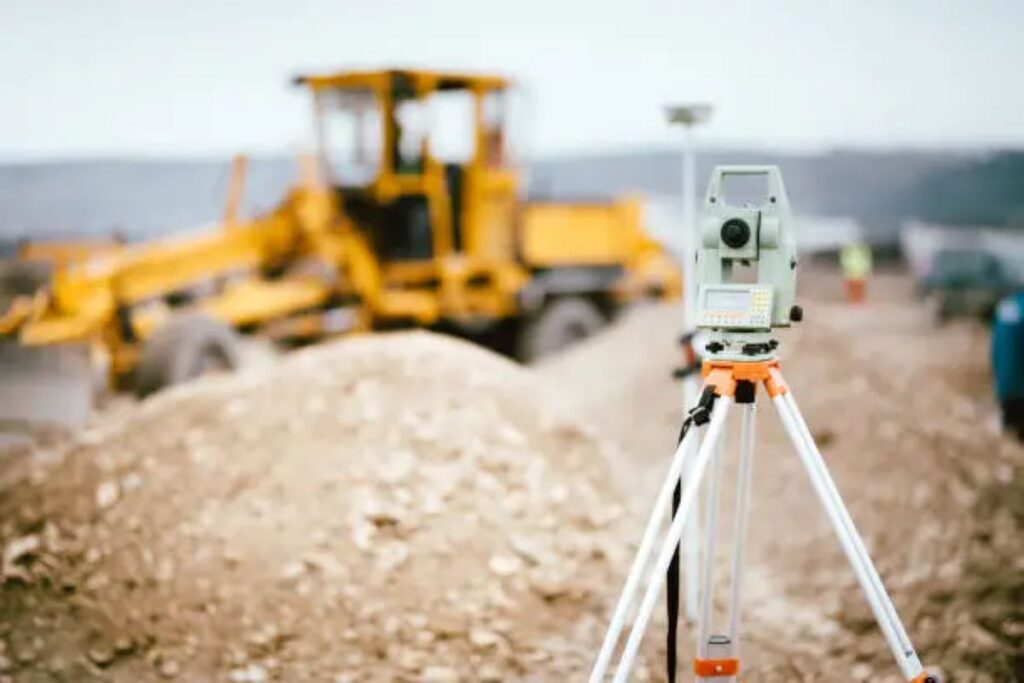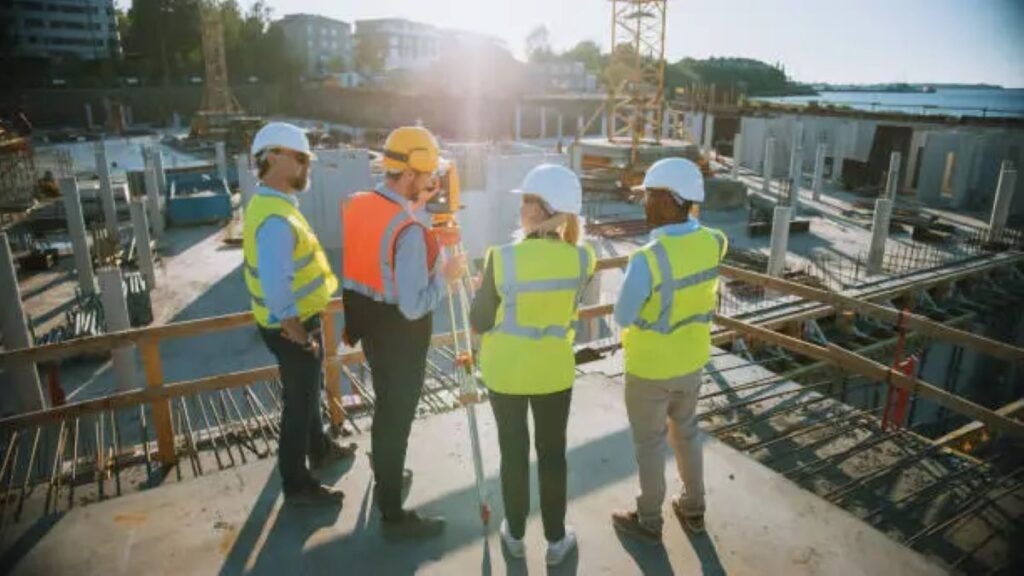The Importance of Engineering Surveying for Construction Projects
Understanding the role of engineering surveying in construction
Engineering surveying is a critical discipline that underpins the success of any construction project. It encompasses the accurate measurement of distances, angles, and elevations to determine the precise location and dimensions of various construction components. This foundational work ensures that subsequent phases of construction proceed without costly errors.
The primary purpose of engineering surveying is to provide vital data that informs project feasibility, design, and execution. By generating accurate and detailed mappings of the construction site, engineers and architects can effectively plan their work, allocate resources, and address potential challenges before they arise.
Defining engineering surveying and its purpose
Engineering surveying is distinct from traditional surveying in that it focuses specifically on measurements and data relevant to construction projects. Its purpose includes assessing site conditions, determining land boundaries, and providing angle and elevation data to ensure accurate construction coordinates. It involves measuring, interpreting, and applying data that directly impacts the project’s success.
This form of surveying is essential for developing precise plans and blueprints. By utilising advanced technology such as GPS, laser scanning, and photogrammetry, surveying engineers can gather extensive data sets that enhance the overall accuracy and efficiency of construction operations. Moreover, the integration of Geographic Information Systems (GIS) has revolutionised the way data is visualised and analysed, allowing for a more comprehensive understanding of the land and its features, which can significantly influence project outcomes.
The relationship between engineering surveying and construction
The relationship between engineering surveying and construction is symbiotic; one cannot function effectively without the other. The findings from engineering surveys feed directly into the planning and execution stages of construction. Accurate surveys facilitate informed decision-making, risk mitigation, and the execution of designs that conform to regulatory and safety standards.
As projects evolve, continuous surveying may be necessary to ensure that the execution aligns with the original designs. This ongoing relationship underscores the importance of having skilled surveyors who can adapt to changing conditions on site, providing updated data as required. Furthermore, the role of engineering surveying extends beyond the initial stages of construction; it plays a crucial part in monitoring the structural integrity of a project over time. Regular surveys can help identify any shifts or deformations in the structure, ensuring that any potential issues are addressed promptly, thus safeguarding both the investment and the safety of the public.
The significance of accurate engineering surveys
Accurate engineering surveys are critical to the overall success of construction projects. The integrity of the construction itself relies heavily on the quality of the initial surveys conducted. Poor or inaccurate data can lead to substantial financial setbacks, project delays, and safety hazards, making precision a non-negotiable aspect of engineering surveying.
Furthermore, accurate surveys are essential for compliance with local zoning laws and regulations. Construction projects must adhere to specific guidelines, and surveys help verify that all elements of the project meet or exceed these legal standards. Failure to comply can result in litigation or the need for costly revisions. In addition, the role of accurate surveys extends beyond immediate compliance; they also foster trust and transparency with stakeholders, including local authorities and the community, which can be pivotal for the project’s long-term success.
The impact of surveying on project planning
Project planning relies heavily on quality data analysis derived from engineering surveys. A thorough survey provides insight into site conditions, helping planners to identify potential issues such as poor soil stability or drainage problems. This information shapes decisions regarding the design and construction methods to be employed. Additionally, the integration of advanced technologies, such as Geographic Information Systems (GIS) and 3D modelling, allows for a more comprehensive understanding of the site, enabling planners to visualise potential challenges and devise innovative solutions before construction begins.
Moreover, accurate surveys enable better budgeting and resource allocation. By understanding land contours, material requirements, and potential obstacles, project managers can devise a realistic and informed approach to project timelines and costs, reducing the likelihood of unexpected financial burdens. This proactive approach not only enhances efficiency but also optimises the use of resources, ensuring that the project remains within budget while maintaining high standards of quality and safety throughout the construction process.
How surveying contributes to construction safety
Safety is a paramount concern on construction sites, and accurate surveying plays a significant role in ensuring a safe working environment. By identifying site hazards early through detailed surveys, construction managers can implement appropriate safety measures to mitigate risks. This includes establishing clear safety zones, ensuring proper signage, and training workers to be aware of potential dangers, all of which stem from the insights gained during the surveying phase.
Structural integrity is another area where surveying contributes to safety. Prior to construction, surveys provide information on the underlying soil conditions and any geographical features that could affect stability. This allows for informed decisions about foundation design and load-bearing structures, thus safeguarding workers on-site and ensuring the durability of the completed project. Furthermore, continuous monitoring through surveying during the construction phase can help detect any shifts or changes in the environment, allowing for timely interventions that can prevent accidents and ensure that the project adheres to the highest safety standards throughout its lifecycle.
Key aspects of engineering surveying in construction
Several key aspects characterise engineering surveying in construction. These fundamental elements not only underline the importance of the discipline but also highlight the various methods and practices employed by surveying professionals to ensure successful project outcomes.
Site analysis and topographic surveys
Site analysis is often the first step in the engineering surveying process. Topographic surveys are conducted to create detailed three-dimensional representations of the terrain. They map out all natural and man-made features, allowing engineers to visualise the site’s complexities.
These surveys facilitate better design choices, as they provide data for understanding how the terrain will interact with the structure. The identification of slopes, dips, and other natural features is crucial in determining the positioning of buildings and infrastructure. Additionally, these surveys often incorporate advanced technologies such as LiDAR (Light Detection and Ranging), which can capture high-resolution data over large areas, enhancing the accuracy and efficiency of the surveying process. This technological integration not only speeds up data collection but also provides a more comprehensive understanding of the site, enabling engineers to make informed decisions that align with environmental considerations and sustainability goals.

Boundary and land surveys
Boundary surveys play a crucial role in determining the legal property lines of the construction site. These surveys ensure that projects do not infringe on adjacent properties, which could lead to legal disputes or delays in construction.
Land surveys, meanwhile, provide information on the location of easements, encroachments, and land use regulations, which can impact project plans. Having a clear understanding of these boundaries and regulations is vital to ensure compliance and avoid potential conflicts with neighbours or local authorities. Furthermore, boundary surveys often involve historical research into land titles and previous surveys, which can reveal valuable information about the property’s history and any potential issues that may arise. This thorough approach not only safeguards the project but also fosters positive relationships with the community, as it demonstrates a commitment to transparency and respect for local regulations.
Structural surveys for construction
Structural surveys assess existing buildings or infrastructure that may impact new construction. Through detailed analysis, engineers can determine the suitability of adjoining properties for new developments or expansions. This often involves techniques such as non-destructive testing to evaluate the integrity of existing materials.
Understanding the current structural conditions of nearby sites is essential for planning and execution. By identifying potential issues ahead of time, engineers can devise solutions that promote safety and structural integrity for the new project. Moreover, these surveys can also include assessments of environmental factors such as soil stability and groundwater levels, which are critical for ensuring that new structures can withstand natural forces and remain resilient over time. The integration of such comprehensive evaluations not only enhances the safety of the construction process but also contributes to the longevity and durability of the built environment, ultimately benefiting both the developers and the communities they serve.
Challenges in engineering surveying for construction
While engineering surveying is an integral part of construction projects, it is not without its challenges. Surveyors must navigate a variety of obstacles, from complex site conditions to environmental factors that can affect the accuracy and feasibility of their work.
Dealing with complex construction sites
Complex construction sites often present unique challenges to surveying teams. Indications of former infrastructure, varying terrain, and built structures can make it difficult to gather data accurately. Surveyors must employ advanced techniques and tools to overcome these issues and deliver precise information.
Additionally, the presence of utilities, such as water and gas lines, requires careful examination. Surveyors must identify and map these services to prevent damage or hazards during construction, which adds an additional layer of complexity to their tasks.
Overcoming environmental factors in surveying
Environmental conditions can significantly impact the accuracy of engineering surveys. Weather patterns, such as heavy rain or snow, can obscure land features, making it difficult to gather reliable data. Furthermore, changes in vegetation or human intervention can alter site conditions over time.
Surveyors must be equipped to handle such challenges and may choose to use specialised equipment that can operate under adverse weather conditions. Maintaining the integrity of data collection is essential to ensure that construction projects commence with accurate information.
The future of engineering surveying in construction
The future of engineering surveying is set to evolve dramatically, driven by technological advancements and an increasing emphasis on sustainable construction. As the demand for efficient and accurate surveying processes grows, the integration of innovative technologies will reshape the landscape of the discipline.
Technological advancements in surveying
Technological advancements, particularly in the fields of automation, remote sensing, and software development, are revolutionising engineering surveying. Utilisation of drones for aerial surveys provides expansive data in a fraction of the time it would take using traditional methods.
Similarly, the application of 3D laser scanning and photogrammetry enhances the precision and detail of surveys, allowing surveyors to create highly accurate models of construction sites. The integration of Building Information Modelling (BIM) also ensures that all project information is seamlessly intertwined, leading to improved collaboration among project stakeholders.

The role of engineering surveying in sustainable construction
Sustainable construction is becoming increasingly significant in contemporary building projects. Engineering surveying plays a pivotal role in ensuring that projects adhere to sustainability practices by assessing environmental impacts and optimising land use.
By accurately measuring and mapping land, surveying helps ensure that construction projects minimise waste, reduce energy consumption, and protect natural resources. Furthermore, it provides data needed for projects aiming to achieve sustainability certifications, making engineering surveying an essential component in promoting environmentally friendly building practices.
More to Read : How to Choose the Right Engineering Surveyor for Your Needs

